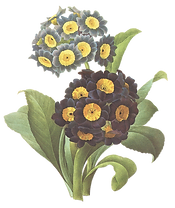So-called Cedar
- Cynthia Thomas
- Jan 25, 2024
- 3 min read
A hush of snow fell suddenly from the cedars. A branch snapped and dropped to the ground. The birds, that had been so well hidden among the bushy limbs, took flight together. As though some captain gave the order, they moved in unison. I marveled from inside the kitchen window. Happy to have this warm perch from which to watch the landscape blanketed in a fresh coat of white.

Cedar trees are a mixed blessing in the winter. Their long branches do not take kindly to heavy snow, often cracking, breaking and devastating the otherwise slender evergreen. However, that same quality makes for a cozy hideout for the feathered set. I’ve seen whole “murders” of crows in the cedar treeline that we planted on the edge of our suburban lot. The blue berries are an irresistible snack to the starlings, crows and grackles that will congregate so thick the lawn turns black.
Those frosty-blue berries (actually itty-bitty cones) are edible to people too – said to taste better than their cousin, the ones on the juniper bush used in flavoring gin – although I can honestly say I’ve never tasted one.
The wood of the Eastern Red Cedar (Juniperus virginiana) is hard, close grained, and takes a high polish. It is full of resin which preserves it from rot and worms. Furniture makers use the pungent wood to line a chest or closet. Cedar oil, a kind of turpentine extracted from the wood, was used in ancient times as a preservative for parchments and garments. I love the smell and even buy the essential oil named “Cedarwood.” Some may think of guinea pigs or hamsters when they smell it, because cedar chips are used in small animal bedding, but I like the outdoorsy scent.
Though I’ve always referred to this mid-sized conifer, that turns bronze in the winter, as a cedar, the latin name tells you that it’s not. The true cedars are genus Cedrus and family pinaceae. They have barrel cones and short needles. Those cedars are tall and stately specimens commanding respect in the forest – think Cedar of Lebanon (Cedrus libani)
Psalm 92: 12 “The righteous will flourish like a palm tree, they will grow like a cedar of Lebanon; planted in the house of the LORD, they will flourish in the courts of our God.”
None-the-less, our American native ‘cedars’ are well-adapted to almost any soil and in the case of the ones we have in our yard, easily transplanted while they are young trees. I still remember the day that my husband, Stan, and I dug the dozen little trees from a field near my grandparent’s house. We were so young and house-poor. We wanted a hedge between us and the busy road that faced our property. It’s hard to believe now, but in one afternoon, we dug all those little trees and replanted them in our yard.
Ahhhh, the energy to be young. The audacity to think you could successfully move that many trees. But we did. And they survived in our heavy clay soil. It was a triumph due to some simple garden principles:
Go native
Plant 2x what you want to survive
Feed the local eco-system and your soul at the same time.
I hope and pray you enjoy the beauty and rest of these winter months and take heart that our little bulbs are underground doing the same.























Comments